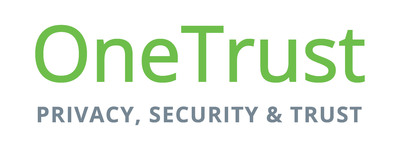As the world increasingly moves towards a future of remote work, employees and employers alike have had to make numerous adjustments. One such change relates to remote worker productivity metrics. When employees come to their workplaces, their supervisors can directly observe whether they make the most of their time on the clock or not. However, you may know that doing it is not so straightforward with more people working at home.
Patient Feedback Could Help Measure Worker Productivity
It’s not necessarily typical for patients to receive requests to fill out surveys once they attend in-person doctor visits. However, the increase in telemedicine has made researchers especially interested in how patients feel about receiving care remotely. Plus, it’s easy to push a feedback request to a person immediately after an appointment ends, either directly on-screen or via email.
A recent study of patients who received telemedicine care during the COVID-19 pandemic asked respondents how they felt about the quality of care. The results showed that 79% either agreed or strongly agreed that they were very satisfied with it. Then, 88% of patients said their providers engaged in the session within 15 minutes of the scheduled appointment. Another notable finding was that 84% of patients felt their physicians spent enough time with them.
Participating in a telehealth visit does not always mean the provider is working remotely, but it often does. For example, this study showed that 63.6% of medical professionals had conducted their appointments from home.
A physician’s supervisor could monitor patient sentiments to get a good idea of remote worker productivity in such cases. For example, if patients complain that the doctor seemed rushed or preoccupied during a virtual visit, those are bad signs. The same is true if a provider is consistently very late for appointments. One of the top advantages of telemedicine care for patients is that they can drastically cut down on wait times and often see providers immediately.
Cultural Differences Can Shape Time Perceptions From a Remote Team
Remote working has many associated perks. For example, research showed that if everyone who could worked from home half the time, it would cut 119 billion highway miles traveled per year.
Plus, a remote team could give organizations greater access to people with the required expertise despite geographical boundaries. A medical team in a rural region could get advice from a foremost expert in a rare infectious disease, even if that person is on another continent.
However, remote work can make cultural differences more apparent, too. For example, people’s cultures often shape how they perceive time. The variations could extend to whether someone prefers punctuality over flexibility and if they become more motivated by short- or long-term goals.
These variations mean it’s shortsighted to hold each employee to the same remote worker productivity metrics. Consider a case where a person always meets their deadlines but sometimes has errors in the work. A colleague might occasionally miss time-based milestones by minor amounts but virtually never have mistakes in their submissions. That scenario suggests that one person prioritizes getting stuff done on time no matter what, while the other works more slowly to avoid quality issues.
Representatives from Gallup recommend using three universal performance domains to measure the productivity of hybrid and remote teams:
- Assessing how well a person can set and meet goals (A reflection of their personal work)
- Checking how well a person can effectively partner with others (A reflection of their teamwork capabilities)
- Translating how a person’s work brings consequences (A reflection of their commitment to customers)
These three areas suit the realities of remote work while accounting for cultural differences and other variations. Some companies that have fully or mostly remote teams already use them when examining employees’ workforce performance.
Managers Should Avoid Making Assumptions About Apparent Productivity Declines
The surge in remote work left many executives searching for the best ways to ensure their employees stay on task while working from home. Many ultimately chose software that takes periodic screenshots, tracks keystrokes, and monitors mouse movements.
However, a 2021 survey from YouGov of the British workforce found that 59% of people would not work for employers that used remote monitoring software. Instead, 58% preferred team or manager check-ins, while 51% agreed with managers evaluating their work to measure productivity.
Any supervisors feeling concerned about a worker’s less-than-impressive metrics should remember that there’s more than one way to measure worker productivity. An open, supportive discussion could get to the bottom of what’s wrong.
It’s also important to remember that software tools don’t accurately reflect productivity all the time. For example, if a person has a team conference over Zoom, they might rarely or never use their keyboard and mouse. That could make it appear to a time-tracking program that the worker was idle.
Inadequate resources may be to blame, too. One study compiled the remote working experiences of 128 people employed for the United Kingdom’s National Health Service during the pandemic who had medical conditions that made staying home the safest option or lived with vulnerable family members. Many people in that situation tried to continue contributing by working from home.
The research showed that most workers — 99 of the 128 — had roles that let them get duties done remotely. However, 21 of the 99 expressed that they lacked resources to do optimal work from home. Those statistics highlight how important it is for supervisors to specifically check that remote employees have everything they need. Otherwise, those workforce members could continually encounter challenges that make managers reach the wrong conclusions about productivity.
Tracking Remote Worker Productivity Requires New Methods
Managing a remote team requires doing some things differently. Some of them relate to how supervisors track a person’s time on the clock. Look at different metrics or at using alternative methods to measure how well workers use their available work hours. The ideas here can get people thinking about and applying appropriate approaches.





 How to7 years ago
How to7 years ago


 More4 years ago
More4 years ago


 More6 years ago
More6 years ago


 Interview4 years ago
Interview4 years ago


 Other Internet Tech6 years ago
Other Internet Tech6 years ago


 More6 years ago
More6 years ago


 Business Ideas6 years ago
Business Ideas6 years ago







